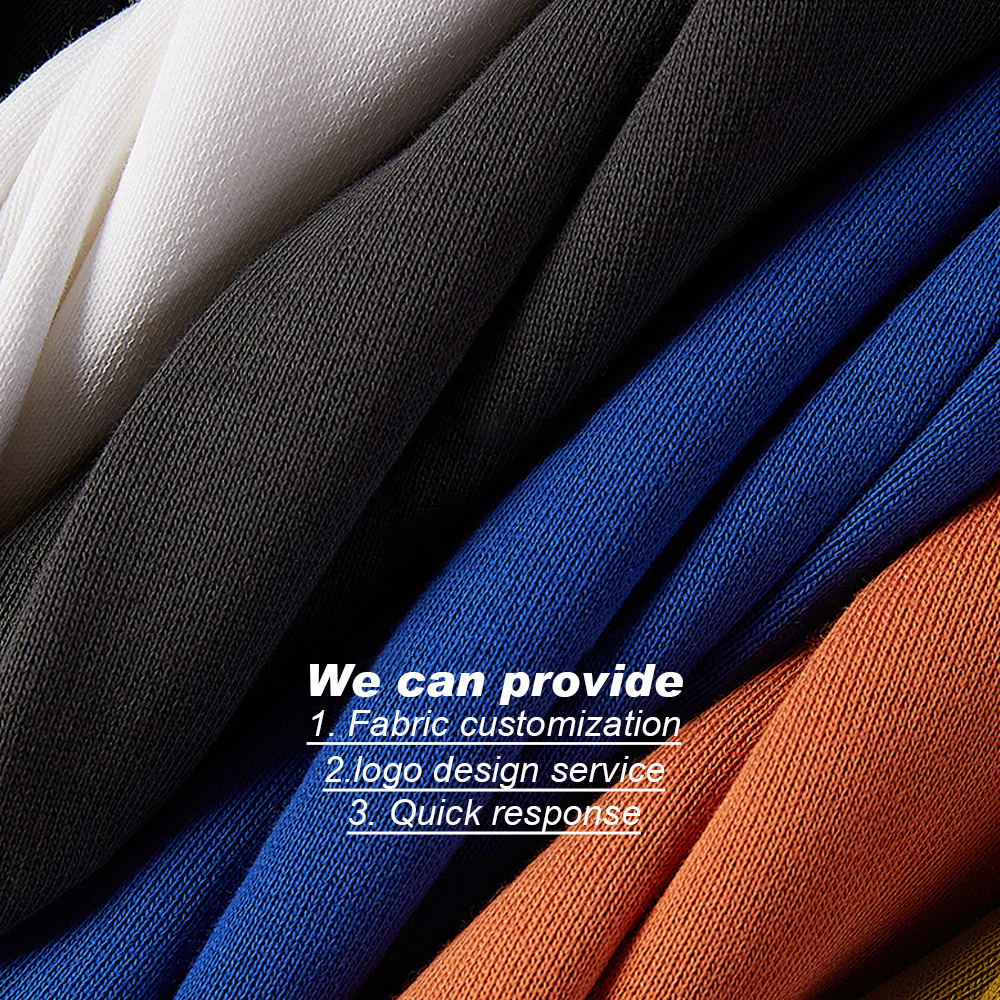Introduction
Not long ago, I had coffee with a buyer from a small streetwear brand in New York. She laughed about how her team placed a huge order of plain black hoodies in 2023—by the time they arrived, earthy tones and recycled fabrics had taken over. Shelves were full, but customers were chasing sage green and sand colors. That moment really shows how fast things move in the bulk apparel world.
If you’re planning orders in 2025, the decision is no longer only about “which T-shirt feels soft.” The big question is: are you picking the fabric and colors your market wants today—not last year?

Fabric Choices Setting the Tone
Fabric has always been important, but in 2025 it feels like buyers treat it almost as part of the brand story.
- Organic cotton → still the safe and popular choice. Easy to explain, easy to sell.
- Recycled polyester → climbing fast, especially for uniforms and sportswear. It lasts and sounds eco-friendly at the same time.
- Hemp & bamboo → no longer niche. If you want a premium angle, these are appearing more often.
I worked with a mid-sized fitness brand last year. They swapped their polyester uniforms for recycled blends. It wasn’t just about durability—their social posts about “eco uniforms” hit thousands of likes. Fabric became part of their marketing.
Color Trends You Can’t Ignore
Colors can make or break bulk orders. Too safe and everything looks flat; too bold and you risk sitting on unsold stock.
Here’s what I see right now in 2025:
- Earthy tones like olive, beige, sand → dominating everyday wear.
- Pastel shades (mint, lilac) → surprisingly outselling navy and standard blue in some categories.
- Bold accents → burnt orange, teal. Buyers are testing these in smaller runs, not as main colors.
A real case: one of my clients added a pastel green T-shirt run alongside classic navy. Nobody expected it, but the green shirts sold out first—40% faster. It’s proof that color isn’t just style, it drives sales numbers.
Finding Balance — Trend vs Stability
The smartest bulk buyers rarely go “all in” on one shade or fabric. They mix.
- Core colors: black, white, grey. Always steady.
- Trend pieces: smaller quantities of seasonal shades.
Think of it like investing: stable assets + high-risk tests. That way you avoid deadstock while still catching the buzz.
How to Catch Trends Early
The question I hear a lot: “How do I know what’s coming before it hits mainstream?”
- Trade shows (Texworld, Premiere Vision) → fabrics show up here months earlier.
- TikTok & Instagram → surprisingly accurate for color direction.
- Suppliers → don’t underestimate them. They usually notice fabric orders shifting before anyone else.
You can dive deeper into sourcing insights in our blog library.
Real Buyer Examples
- A streetwear startup ordered organic cotton tees in muted brown and sage. They branded them as “limited drops,” and customers snapped them up fast.
- A corporate merch client went heavy on neon prints. It looked exciting, but employees felt it was “too much.” Half the stock sat unsold.
Both stories underline the same thing: fabric and color can make or break a bulk order.
Practical Steps for 2025 Orders
If I had to give a short list for bulk buyers right now, it would be:
- Start with stable fabrics like organic cotton.
- Add sustainable blends (recycled poly, bamboo) if it matches your brand.
- Secure black/white first, then test 1–2 trending shades.
- Stay in touch with suppliers—ask what’s moving fastest.
- Don’t delay. Once a fabric trend peaks, mills run out quickly.
FAQ
1. What fabrics are most popular for bulk apparel in 2025?
Organic cotton leads, followed by recycled polyester. Hemp and bamboo are appearing in more premium bulk runs.
2. How do trending colors influence order outcomes?
Colors affect speed of sales. A pastel green T-shirt run outselling navy by 40% is a clear example.
3. What’s the most common mistake when picking fabrics?
Focusing on low price only. Poor-quality blends shrink, fade, or get returned—costing more in the long run.
4. How can I avoid overstocking colors that go out of style?
Split your orders: stable neutrals for volume, smaller runs of trend colors to test demand.
5. What’s the best way to predict fabric and color trends?
Follow trade shows, keep an eye on TikTok/Instagram, and ask your supplier—they see changes before the market reacts.
Conclusion & CTA
In 2025, bulk apparel success is tied to fabric and color choices. Core staples keep you safe, but trends can accelerate sales. The trick is balance: order smart, test new ideas, and let your customers guide the rest.
Thinking about your next order? Want to know which fabric or color mix fits your brand? Contact us and we’ll walk you through the best options before you place bulk orders.

